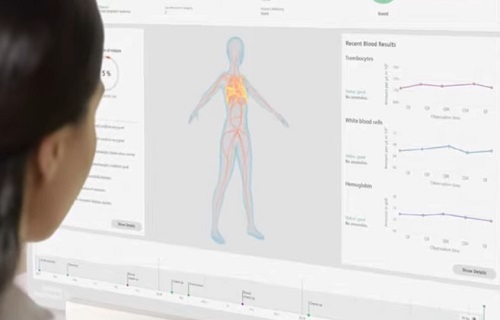Some condition of disorders are very complicated and treatment way dependent on donations from others. We try to tell aplastic anemia. The incidence of aplastic anemia is estimated to be 1-2 cases per million people per year. It can occur at any age and affects men and women equally.
Aplastic Anemia Statistics
Here are some statistics about aplastic anemia:
- Incidence: Aplastic anemia is a rare disease, with an incidence of approximately 2-6 cases per million people per year.
- Prevalence: The prevalence of aplastic anemia is estimated to be between 3-6 cases per million people worldwide.
- Age Distribution: Aplastic anemia can affect people of all ages but it is most common in children and young adults. The median age at diagnosis is 33 years.
- Gender Distribution: Aplastic anemia affects both males and females equally.
What is Aplastic Anemia?
Aplastic anemia is a condition where your body doesn’t make enough new blood cells. Blood cells are special cells that help your body fight off germs and carry oxygen to all your organs. When you don’t have enough of them, you can feel very tired, get sick often and even bleed easily. This is what happens when you have aplastic anemia. It’s a rare condition, but it can be treated with medicine, blood transfusions or special therapies to help your body make more blood cells.


What are Causes of Aplastic Anemia?
Aplastic anemia has various causes and it is divided into two main categories, acquired and inherited.
Acquired aplastic anemia:
- Exposure to Certain Toxins or Medications: Some chemicals and drugs can damage the bone marrow and stop it from making enough blood cells. Some examples include pesticides, benzene and certain antibiotics and anti-seizure drugs.
- Viral Infections: Some viral infections such as hepatitis and parvovirus can cause the bone marrow to stop working properly.
- Immune System Disorders: In some cases, the immune system can mistakenly attack the bone marrow, causing it to stop producing blood cells.
- Idiopathic: which means the cause is unknown.
Inherited aplastic anemia:
- Fanconi Anemia: it is a rare genetic disorder that affects the bone marrow and the ability to produce blood cells.
- Dyskeratosis Congenita: it is a rare genetic disorder that affects the production of blood cells and can also affect other parts of the body.
- Other Inherited Bone Marrow Failure Syndromes: there are other rare genetic disorders that can cause aplastic anemia, such as Diamond-Blackfan anemia and Schwachman-Diamond Syndrome.
It’s important to remember that in certain cases, cause of aplastic anemia may not be clear and further testing may be needed to determine the underlying cause.
What is Symptoms of Aplastic Anemia?
Aplastic anemia is characterized by a decrease in the number of blood cells in the body. Symptoms of aplastic anemia can vary depending on the severity of the condition, but some common symptoms include:
- Fatigue or Weakness: This can be caused by a shortage of red blood cells, which are responsible for carrying oxygen to the body’s tissues.
- Shortness of Breath: This can be caused by a shortage of red blood cells, which can make it harder to get enough oxygen to the body’s tissues.
- Bruising or Bleeding Easily: This can be caused by a shortage of platelets, which are responsible for helping the blood to clot and clotting disorders.
- Frequent Infections: This can be caused by a shortage of white blood cells, which are responsible for fighting off germs.
- Pale Skin: This can be caused by a shortage of red blood cells, which can make the skin look pale.
- Rapid Heartbeat: This can be caused by a shortage of red blood cells, which can make the heart work harder to pump blood throughout the body.
- Dizziness or Fainting: This can be caused by a shortage of red blood cells, which can make it harder to get enough oxygen to the brain.
- Sore Mouth or Tongue: This can be caused by a shortage of platelets, which can make it harder for the mouth or tongue to heal after injury.
It’s worth noting that these symptoms can also be caused by other conditions, so it’s important to see a doctor if you have any concerns.
What is Aplastic Anemia Treatment Methods?
Treatment options for aplastic anemia will vary depending on the individual case and overall health condition. Healthcare professional will be able to determine the best course of treatment for each patient. But our editors try to their best. Here is latest scientific treatment for aplastic anemia:
- Blood Transfusions: Blood transfusions are used to replace the missing red blood cells, which are responsible for carrying oxygen throughout the body. This can help to improve symptoms such as fatigue and shortness of breath. Blood transfusions are typically given as needed, and the frequency will depend on the severity of the anemia.
- Immunosuppressive Therapy: Immunosuppressive therapy is used to suppress the immune system and stop it from attacking the bone marrow. This can be done using drugs such as antithymocyte globulin (ATG) or cyclosporine. These drugs work by decreasing the activity of the immune cells that are attacking the bone marrow.
- Bone Marrow or Stem Cell Transplant: Bone marrow transplant, mostly known as a stem cell transplant, is a procedure in which a patient’s damaged bone marrow is replaced with healthy cells from a donor. This is typically only done for younger patients with severe aplastic anemia. The procedure can be done using cells from a matched sibling donor or from an unrelated donor or cord blood.
- Androgen Therapy: Androgen therapy is used to stimulate the bone marrow to produce more cells. This can be done using drugs such as oxymetholone or danazol. These drugs work by increasing the production of red blood cells and platelets.
- Supportive Care: Supportive care is used to improve the quality of life during the treatment. This may include antibiotics and antiviral to prevent infection and transfusion of platelets and plasma to prevent bleeding. This care also include advice and treatments to help with the side effects of treatment slike such as fatigue and emotional support.
You can find detail information about stem cell in below page:
What is Aplastic Anemia Guidelines?
The following are some guidelines for the treatment of aplastic anemia:
- Medications: The most commonly used medications for aplastic anemia are immunosuppressive drugs, such as antithymocyte globulin (ATG) or horse anti-thymocyte globulin (h-ATG), which work by suppressing the immune system and allowing new blood cells to be produced.
- Stem Cell Transplant: In some cases, stem cell transplant may be recommended as a treatment option. This involves replacing the patient’s bone marrow with healthy stem cells from a donor.
- Blood Transfusions: Blood transfusions may be necessary to replace the low red blood cells and platelets in patients with severe aplastic anemia.
- Monitoring: Regular monitoring of blood counts, including white blood cells, red blood cells and platelets, is essential to evaluate the effectiveness of treatment and to detect any complications.
- Supportive Care: Patients with aplastic anemia may also require supportive care to manage symptoms and complications such as infections, bleeding and fatigue.
What are the Survival Rates For Aplastic Anemia?
Survival rate of aplastic anemia change according to severity of condition and other indivual overall health situation. The severity of the condition is classified as mild, moderate or severe based on the number of blood cells that are affected.
- Mild aplastic anemia: In mild cases, the patient may have low levels of red blood cells, white blood cells and platelets but they are still able to produce some new blood cells. Patients with mild aplastic anemia may not experience many symptoms and may not require treatment.
- Moderate aplastic anemia: In moderate cases, the patient has a greater reduction in the number of blood cells and may experience symptoms such as fatigue, infections and bleeding. Patients with moderate aplastic anemia may require treatment with immunosuppressive drugs, such as antithymocyte globulin (ATG) or horse anti-thymocyte globulin (h-ATG), to stimulate the production of new blood cells.
- Severe aplastic anemia: In severe cases, the patient has a very low number of blood cells and may experience severe symptoms such as severe infections, severe bleeding and organ failure. Patients with severe aplastic anemia require intensive treatment, such as a stem cell transplant, to replace the patient’s bone marrow with healthy stem cells from a donor.
Survival rates for aplastic anemia can vary depending on the severity of the condition, the patient’s age and overall health, and the type of treatment received. For mild aplastic anemia, the survival rate is around 90-95%, for moderate aplastic anemia, the survival rate is around 75-80%, and for severe aplastic anemia, the survival rate is around 50-60%.
For patients who receive a stem cell transplant, the survival rate is around 70-80%. It’s important to know that these are general statistics and individual cases may vary. It’s important to consult a doctor for a personalized assessment of the case and for more specific information about treatment options and expected outcomes.



What is Tips and Advices Against Aplastic Anemia?
Here are some tips and advice for managing and reducing the risk of aplastic anemia:
- Avoid exposure to toxins: Exposure to some chemicals and toxins can increase the risk of aplastic anemia. Avoiding exposure to toxins, such as pesticides and solvents, can help reduce the risk of developing the condition.
- Eat a healthy diet: Eating a well-balanced diet that is high in fruits and vegetables can help boost the immune system and improve overall health.
- Exercise regularly: Regular exercise can help improve overall health and boost the immune system.
- Avoid smoking: Smoking can increase the risk of developing aplastic anemia and other health issues.
- Avoid unnecessary medications: Taking unnecessary medications, such as antibiotics, can increase the risk of aplastic anemia.
- Follow up on your health regularly: It is important to have regular check-ups and follow-ups with your doctor to monitor your health and detect any changes early.
- Be aware of the symptoms: Be aware of the symptoms of aplastic anemia, such as fatigue, infections and bleeding, and seek medical attention if you experience any of these symptoms.
It is important to remember that aplastic anemia is a rare and serious condition and early diagnosis and treatment are important for the best outcome. If you or a loved one has been diagnosed with aplastic anemia, it is important to work closely with your healthcare team to manage the condition and reduce the risk of complications.

